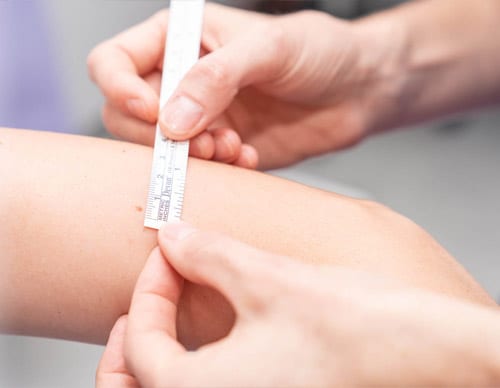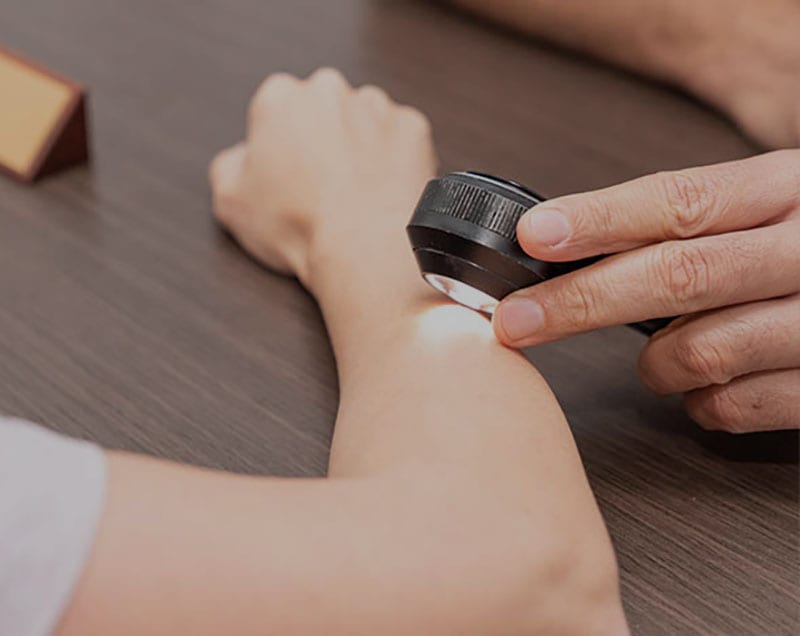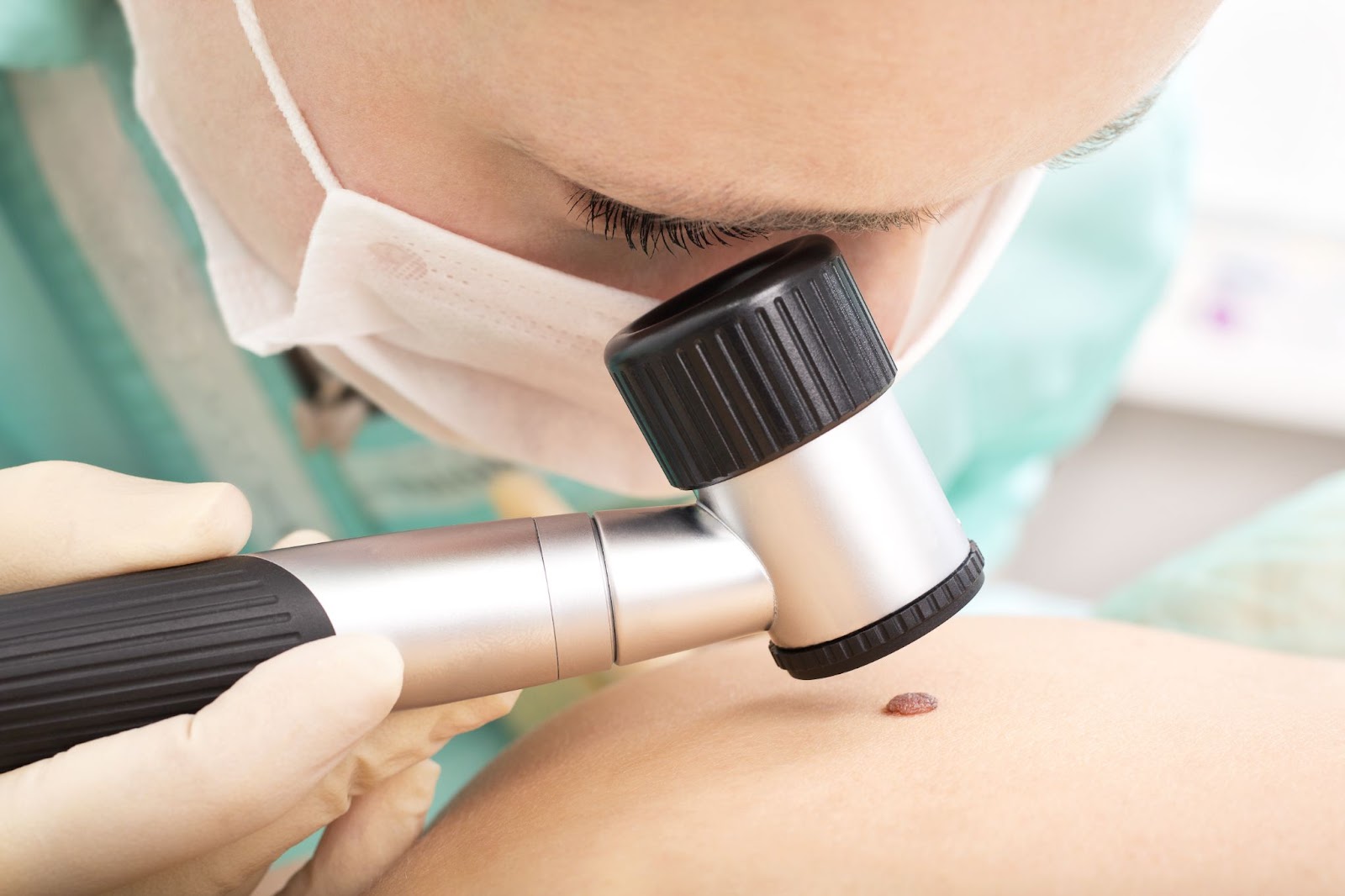What are the common causes of skin cancer?

Skin cancer develops when skin cells are altered and start reproducing abnormally. As they grow and divide without stopping, they can spread to other places in your body through your blood or lymphatic circulation.
The question of ‘What causes skin cancer?’ is frequently asked by people on the internet.

Skin cancer is one of the most common types of cancer worldwide, with over 5 million new cases diagnosed each year. Australia has one of the highest skin cancer rates in the world.
In Australia melanoma is the second commonest invasive cancer of women after breast cancer. It is the second commonest invasive cancer of men following prostate cancer. Melanoma is now more common than either lung cancer or bowel cancer in Australia.
What causes skin cancer?
- Basal cell skin cancer is caused by exposure to ultraviolet (UV) rays from the sun or tanning beds. The UV rays can damage the DNA inside your skin cells, causing the unusual cell growth.
- Squamous cell skin cancer is mostly caused by UV exposure, mainly the sun. Squamous cell skin cancer can also develop after long-term exposure to cancer-causing chemicals. It can also develop within a long standing burn scar or ulcer .
- The cause of melanoma remains unclear. The sun has a major role but there are other unexplained factors. Like basal and squamous cell skin cancers, melanoma can be caused by UV rays. However, melanomas can sometimes develop in parts of your body that are not typically exposed to sunlight.

Risk factors
There are several risk factors for skin cancers, including exposure to ultraviolet (UV) radiation, genetics, and environmental factors.
- Sun exposure – One of the most significant risk factors for skin cancer is exposure to UV radiation from sunlight. When the skin is exposed to UV radiation, it can damage the DNA in skin cells, leading to mutations and abnormal growth. Over time, this can lead to the formation of skin cancer.
- Tanning Studios – Tanning including exposure to tanning lamps and beds, also puts you at risk. A tan is an injury response to excessive UV radiation, and repeated exposure to UV radiations in this way can trigger the process of formation of DNA damage leading to formation of skin cancers.
- Fair skin – Skin cancer can affect everyone, regardless of their skin color. Pigment or colour of the skin is related to formation of melanin. Melanin helps to protect your skin from damaging UV radiation. People with fair skin (which means they have less pigment) have less protection against damaging UV radiation.
- A history of sunburn – Having had one or more blistering sunburns as a child, teenager or adult increases your risk of developing skin cancer as an adult.
- Moles – People who have many abnormal moles (dysplastic nevi) are at increased risk of skin cancer. Abnormal moles usually look irregular and are generally larger than normal moles. Abnormal moles are more likely to become cancerous.
- Precancerous skin lesions – The risk of skin cancer may increase for people who have skin lesions known as actinic keratosis. These precancerous skin growths typically appear as rough, scaly patches that range in colour from brown to dark pink. Actinic keratoses are caused by the sun. The most common place for these precancerous growths is on the head, face and hands of fair-skinned people.
- A family history of skin cancer – If one of your family has had skin cancer, you may have an increased risk of getting skin cancer.
- Sunny or high-altitude climates – People who live in sunny warm climates are exposed to more sunlight than are people who live in colder climates. They are exposed to more UV radiation.
- A weakened immune system – Immune systems have a crucial role to keep us healthy. People with weakened immune systems (such as people living with HIV/AIDS and those taking immunosuppressant drugs after an organ transplant) have a greater risk of developing skin cancer.
- A personal history of skin cancer – 2/3rds of people who develop a skin cancer go on to grow a second skin cancer. If you have had two skin cancers the risk of a third is over 90%.
- Exposure to certain substances – Environmental factors can also contribute to the development of skin cancer. Exposure to certain chemicals, such as arsenic or coal tar, can increase the risk of developing skin cancer. Additionally, exposure to radiation from medical procedures or nuclear fallout can also increase the risk of developing skin cancer.
- Genetics – Genetics can also play a role in the development of skin cancer. People with a family history of skin cancer are more likely to develop the disease themselves. Additionally, people with certain genetic mutations are also at an increased risk of developing skin cancer.
Solution
- Reducing sun exposure helps. Suntan or sunburn means future skin cancer risk. Avoid outdoors 11:30 AM to 3:00 PM.
- Apply and reapply sunscreen regularly.
- Shade over the pool & playgrounds protects our kids.
- Long-sleeved shirts.
- Hats with a brim.
- Drive with windows up.
- Sunglasses.
- Long pants or skirts.
- 50+ Sunscreen.
- Umbrellas and shelters.
- Enclosed tractors.
- Check your own skin each month.
- See your doctor if any new or changing skin lesion develops.
- Have a regular skin checkup with a professional every 1-2 years.
- Patients who have had a melanoma need 6 monthly skin checks by a doctor for life.
Early detection is already known as the best way to ensure successful treatment of skin cancer before the disease develops further. Unlike other organs, your skin is always highly visible. That means you can proactively watch for signs of changes, unusual spots, or worsening symptoms.
We have a dedicated blog on how to detect early signs of skin cancers.
If you need skin check in Maitland or looking skin cancer clinic in Newcastle then call Elixir @ Hunter today!
